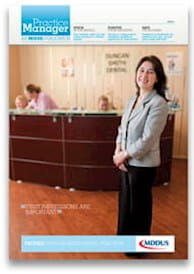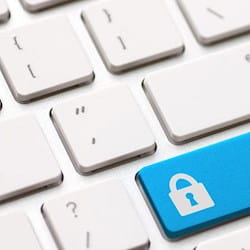MEDICAL and dental surgeries are usually more associated with healing than violent crime. But as attacks on healthcare staff increasingly make their way into news headlines, it is important that managers are aware of how to minimise the risks facing practice employees.
A survey by the British Medical Association in 2008 revealed one in three doctors had been physically or verbally attacked at work in the previous year, although many doctors didn’t report it to police. Junior doctors were most likely to experience violence, followed by GPs. The BMA raised concerns of "an increasing acceptance of violence" and underlined the need for a zero-tolerance approach to violence against healthcare staff.
Medicine, aggression and violence are far from uncommon bedfellows. Emergency departments deal with a daily stream of injured patients, many under the influence of alcohol or drugs, who have been involved in violent incidents.
Patients’ needs sit uneasily alongside the legal obligation on practices to provide safe places for staff to work. Short of introducing metal detectors at the surgery door, there is nothing to prevent patients bringing weapons onto the premises. And as some recent cases have shown, violence and aggression are not restricted to practices in economic and social deprivation hotspots.
From a health and safety perspective, every practice should have a comprehensive policy setting out what risks to staff (and the public) have been identified, what steps have been taken to eliminate or minimise them, and who is responsible for managing practice safety.
In the event of a serious injury or dangerous incident, the enforcement authorities will want to see what the practice has done to identify, assess and manage the risks. This will include an inspection of the paperwork and records of training supplied to staff both when they start employment and on a continuing basis. Specific training should be undertaken following each incident and health and safety should appear regularly on practice meeting agendas.
A degree of physical separation of staff and patients is another good security measure. Reception and ancillary staff should normally work in an area to which the public do not have easy access. But separation should not impede communication. When patients enter the waiting room they should be able to see and talk to staff without raising their voice.
Practices should consider installing panic buttons in all rooms where staff and patients come into contact, especially in consulting rooms. The panic button can either set off a buzzer in the reception area or set off an alarm which can be heard throughout the premises, and can also be connected directly to the local police station. Where possible, consulting rooms should have more than one exit, enabling staff to escape easily if need be.
Staff who carry out home visits – whether during the day or out of hours – should always carry a mobile phone and a personal alarm. They should also ensure that someone knows where they are going, and when they expect to return.
Potentially dangerous equipment and medicines stored on the premises should normally be kept under lock and key. In particular, syringes, needles, other sharps, and patella hammers should not be left lying out in consulting rooms. Greater security, particularly for staff working in the evenings and weekends, can be achieved by installing a buzzer controlled entry system, ideally in conjunction with CCTV, while motion triggered external lights can mitigate the dangers of long winter nights.
Despite the headlines, it’s important to remember that the majority of unpleasant encounters are verbal. Few result in violence and only a tiny minority result in serious injury. Setting the tone is important and the practice should make clear what the rules are. A notice should be prominently displayed explaining that the practice does not tolerate physical or verbal abuse of staff by the public, or vice versa.
Good communication is also important in helping to avoid confrontations, so make sure all staff, doctors included, undertake regular training in communication skills. It is important to be aware of how to calm down a frustrated, worried, or disturbed patient rather than aggravating them further.
If you are faced with an implacable patient, you can explain to them how to make a complaint, or warn them that if they persist in behaving disruptively, the police will be called. And while following the guidelines set out above will not guarantee staff safety in all circumstances, it will go a long way towards controlling the risk of a serious incident.
Thomas Elliot, Health and Safety Manager, Law At Work
Law At Work is MDDUS preferred supplier of employment law and health and safety services. For more information and contact details please visit http://www.lawatwork.co.uk/
This page was correct at the time of publication. Any guidance is intended as general guidance for members only. If you are a member and need specific advice relating to your own circumstances, please contact one of our advisers.
Read more from this issue of Practice Manager

Save this article
Save this article to a list of favourite articles which members can access in their account.
Save to library
